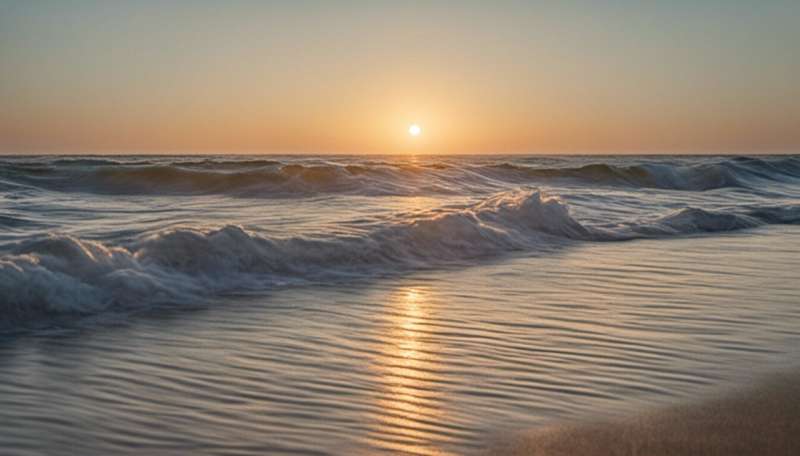Seagrass a crucial weapon against coastal erosion

A seagrass commonly found along WA's coast could be an important tool in a decades-long battle against erosion in Albany, a preliminary study by UWA has found.
Middleton Beach lost most of its seagrass meadows during a storm in 1984, which has caused long-term erosion problems.
Seagrass beds help prevent coastal erosion in a number of ways, including by stabilising sediment in the ocean.
In April, 65 UWA students descended on Albany as part of their marine science studies.
Lecturer Dr Jeff Hansen's group investigated the effect of surviving patches of Posidonia croiacea seagrass on wave height at Middleton Beach.
P. croiacea has long, thick, leathery leaves and is widespread along WA's coast, particularly in areas with strong wave action.
"As waves move over the seagrass, the blades get moved back and forth, and that takes energy, which is removed from the waves," Dr Hansen says.
"Over hundreds of thousands of seagrass blades, that begins to add up.
"Theoretically, as waves move over seagrass meadows, they should decrease in height – so that's what we tried to test."
Students calculated the average wave height in areas of dense and patchy seagrass by strapping a series of water pressure sensors to bricks and placing them underwater for 72 hours.
They were then able to compare the size of waves in dense and patchy seagrass meadows with areas that had no vegetation.
Dr Hansen says the data is still being finalised, but preliminary results found waves were 10-20 per cent smaller in dense seagrass meadows, compared to a bare seafloor.
Wave height was reduced by approximately 10 per cent in areas with patchy seagrass.
Dr Hansen says the erosion "buffering" capabilities of seagrass would be much larger if the meadows recovered to their former glory.
"The idea is that as the seagrass continues to recover as time goes on, there will be less wave energy breaking at the shoreline, which will potentially encourage less erosion," he says.
Dr Hansen says another way seagrass helps prevent erosion is by creating a shoal-like effect.
It slows down the movement of ocean currents between the seabed and the tips of the blades of seagrass.
"It tends to trap sand and sediments so the bottom [of the ocean floor] becomes shallower as the seagrass spreads," he says.
"As that area becomes shallower, the waves will break further away from the shoreline and that will then encourage less erosion of the shoreline during storms."
Provided by Science Network WA
This article first appeared on ScienceNetwork Western Australia a science news website based at Scitech.




















